Author: Kevin J. Gaughan
LABash 2011!
Land8 will be there….will you?
It is getting close to that time of the year again when landscape architecture students from across the globe throw down their pencils and eraser shields (do students even know what these are any more?), in complete disregard for the huge deadline looming over their heads, and come together to celebrate their love/hate relationship with this fantastically misunderstood profession! This year the students of Purdue University will have the honors of hosting this special conference which has been passed from school to school since 1970.
What is in store in 2011:
The focus of LABash 2011 will be celebrating cultural landscapes and landscape architecture worldwide. They have a great program lined up which will include lectures and demonstrations from twenty professionals, a design charrette, and tours of Frank Lloyd Wright’s Samara House. Key note speakers include Patrick Dougherty, the world renowned landscape artist best know for his woven willow sculptures; David Rubin, a partner at the award winning OLIN Studio; and Mark Dawson a principal at Sasaki Associates and currently the director of the Landscape Architecture Foundation.
This year Land8 will once again have a booth at the LABash Expo as well as be involved in Friday night social event. Plus, this year we are hoping to stream some parts of the conference on Land8. We can’t wait to see you all there, make sure to stop by our booth and say hi!
For those of you who haven’t registered yet, you can do so here: http://www.purduelabash.com/home.php
Also, make sure to check out their Event Page on Land8 Lounge and become a member of their Group for the latest updates.
A little bit of history:
I thought it might be nice for those who have never heard of LABash or have just recently been made aware of its awesomeness to give a little bit of the history of this event. As the lore goes…LABash originated back in 1970 at the University of Guelph (well, more accurately in the middle of some field in the vicinity of the university). As could be deduced from the name, LABash started out as exactly that, a “Bash” for landscape architects. Now, I have heard several stories about what sparked this creation of this event. Some say it was started as a rebellion against the ASLA, others have told me that it was started as a rebellion against the University, and finally, I have heard that the Guelph students were just bored, and thought it would be fun to invite a bunch of other landscape architecture students to come drink some kegs with them in a field. Regardless of motive, I think it is important to remember that LABash was started as an event organized by landscape architecture students (voluntarily), for landscape architecture students.
This party was then solidified into tradition in the spring of 1971 when the students of Louisiana State University hosted the 2nd annual LABash. From there it has been passed from school to school evolving a little each year. At some point in its infancy the students decided that it might be a good idea to have speaker come give a lecture. And by the 2000’s it had evolved into a full fledged conference with lectures, workshops, expos, social events, opening and closing ceremonies, tours, and even a LABash King and Queen! Although it has definitely changed in shape and size, LABash continues to be an event planned by student for students…and do not let the formalities fool you, it still holds the reputation of being one of the best parties around!
Vectorworks 2011 Software Wins Construction Computing “Product of the Year” Award
Columbia, Md. (December 9, 2010) – Vectorworks 2011 software was honored at this year’s Construction Computing Awards ceremony as the winner of the Product of the Year 2010 award.
In addition to winning the Product of the Year award, Vectorworks 2011 software was also honored as a runner up in two categories: CAD Product of the Year 2010 (Nemetschek Vectorworks, Inc. – Vectorworks 2011) and Channel Partner of the Year 2010 (Computers Unlimited).
“We are honored to be recognized by the Construction Computing Awards,” says Sean Flaherty, CEO of Nemetschek Vectorworks. “We have worked hard to make Vectorworks 2011 a breakthrough release, strengthening its 3D technology and BIM capabilities, and it’s rewarding to be recognized by members of the AEC industry in this way. We are also very fortunate to have partners like Computers Unlimited, whose efforts have been essential to our success in the U.K.”
The awards ceremony was held November 28 at The Guoman Tower Hotel in London. About 200 attendees from industry-leading companies attended the event, which included a champagne reception, a three-course dinner, and entertainment by comedian Adam Bloom. Team members from Computers Unlimited, the Vectorworks distributor in the U.K., were in attendance to accept the award.
Now in their fifth year, the Construction Computing Awards (also known as The Hammers) showcase and reward the technology, tools, and solutions for the effective design, construction, maintenance, and modification of commercial buildings, residential and social housing, and civil engineering projects of all sizes. Results are determined by Construction Computing Magazine reader votes and decisions by a panel of judges. Paul Morrell, the U.K. Government’s Chief Construction Advisor, presented this year’s awards.
About Nemetschek Vectorworks, Inc.
Nemetschek Vectorworks, Inc. is a wholly owned subsidiary of Nemetschek AG and has been developing software since 1985. The Vectorworks line of software products provides professional design solutions for more than 450,000 designers in the AEC, entertainment and landscape design industries. With a tradition of designing flexible, versatile, intuitive and affordable CAD and Building Information Modeling (BIM) solutions, Nemetschek Vectorworks continues to be a global leader in 3D design technologies. For more information, visit www.vectorworks.net.
Land8 Happy Hour – DC Style
The 3rd Annual Land8 Happy Hour went of without a hitch (minus the minor microphone mishap, haha)! The event took place at Rocket Bar in Washington, DC on September 12th, 2010. With well over 100 members in attendance, this is by far the largest event to date for the lounge. It has been very exciting to watch this community grow and have opportunities such as these for members to socialize and share their excitement for this great profession. In addition to networking, raffles, and games, the Land8 Happy Hour was also the forum for the announcement of the first ever Land8 Planting Design Contest. Please take some time to check out the winners. Finally, thanks to everyone who came out to the event!
Now for some more pics from the evening:
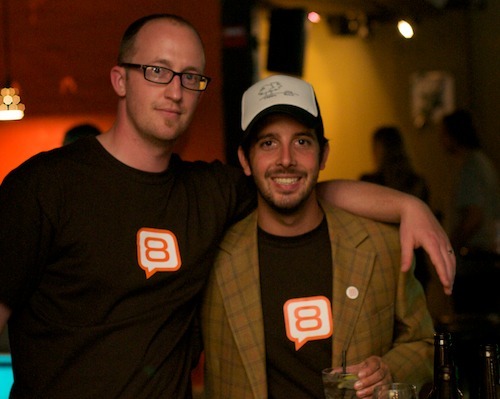
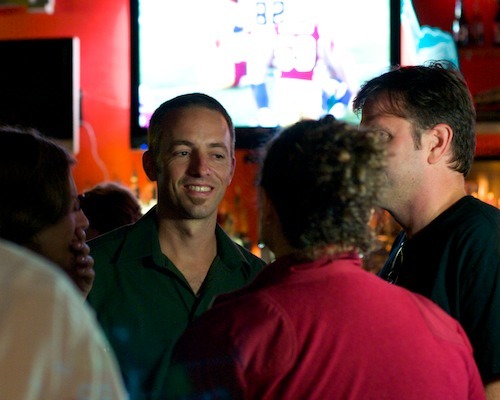
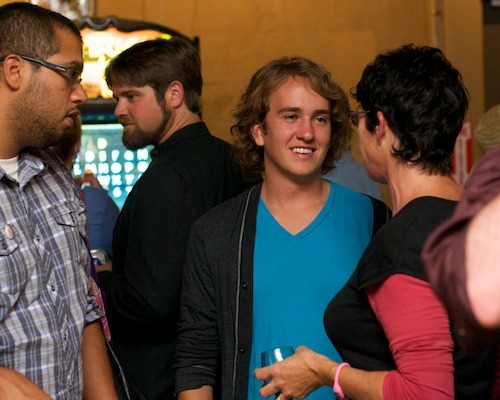
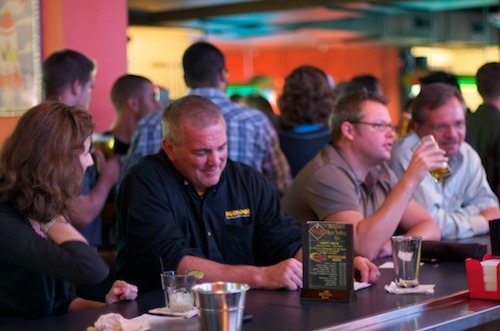
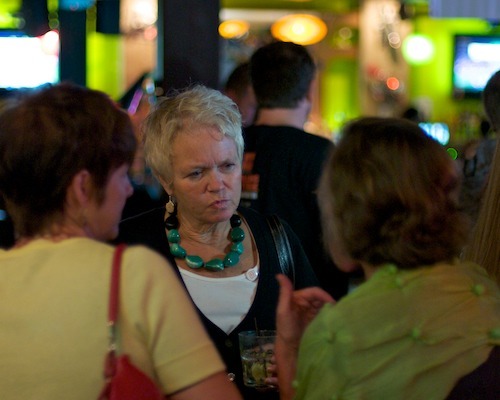

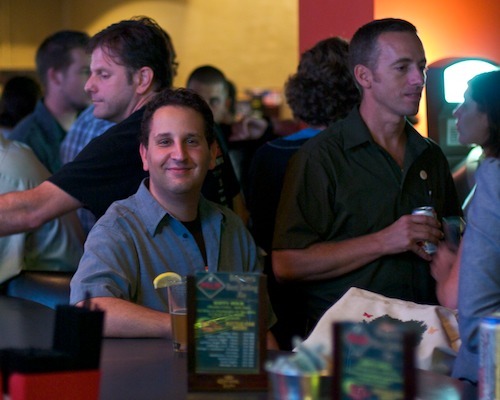
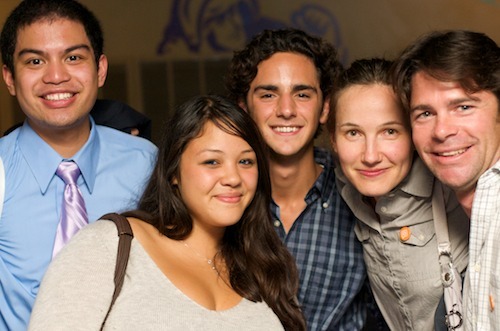
A special thanks to Chris Whitis from SitePhocus for photographing the event. Check out all the event pics here.
Finally, thanks again to Permaloc for their wonderful support in making this event a reality!

The Slow Life – Belize
It is now day 6, and we are feeling great!
After a hot but pleasant night at the quaint Belcove Hotel, located on Haulover Creek about a block down from the famous Swing Bridge, we spent the morning investigating the inner workings of downtown Belize City. I would not say they were the best inner workings I have ever seen. Except for the cheap waffles and johhny cakes, Belize City did not really have that much to offer at first glance. So, we decided to head on out to the Cayes and see what Caribbean Island life is all about.

Here is a view or our hotel from the Swing Bridge, the yellow and red one on the right.


And here is a little taste of the urban fabric downtown.


What pretty colors! It is too bad nobody wanted to hang out in it in the 90 degree heat with no shade, however, the vendors surrounding the park seemed to do alright.
Our Caye of choice was Caye Caulker, located about 45 minutes north of Belize City by boat and about a mile inside the largest barrier reef in the western hemisphere (also possibly the only, but largest sounded more impressive). Everywhere on the Caye, where bicycles and golf carts dominate the public transportation market, there are signs posted urging all to “Go Slow”. I believe the residents of Caye Caulker not only take these signs literally, but have made it their mantra. It was a great place to relax and to enjoy the fact that we had nothing to do and nowhere to go. In addition to hanging out at the beach bars and walking the three streets of the Island, we decided to test our snorkeling skills out at the reef. It really was a pretty amazing place. I think what impressed me most was the diversity of the marine life in this little underwater oasis. It was only a week ago that I was out fishing in a local lake in CT with my neighbor Greg; and it just hit me that I could probably count all of different kinds of fish in those waters on one of my hands (and most of them are stocked). And yet, Bolton Lake seemed like such a pristine piece of nature at the time. I think that sometimes, especially as our surroundings get more urbanized and sterilized by development, we can tend to get excited if we can have any little critters at all in our landscapes. We get tricked into thinking that we have achieved biodiversity just by having bugs, birds, and a chipmunk all in the same general location. However, this could not be further from the truth. To have truly healthy and sustainable landscapes it is imperative to not only have different types of flora and fauna, but many different species of each. This was something that I got a really good glimpse of at the reef. Now I just have to hope that they will be able to continue to protect those waters for years to come, so that others may gain inspiration from it as well. Anyway, a couple highlights from adventure to the coral reef included swimming with the stingrays and coming face to face with a barracuda, not much unlike the one I had eaten for dinner the night before!
Oh, here I am…and there is the beautiful blue Caribbean.

And here is one of the three main streets in town, and the only gas power vehicle I saw on the island.

This is a great example of taking advantage of your natural resources. If you have lots of water and not much land, why not sit in it?
Becky and I fearlessly swimming with the stingrays…okay, maybe not fearlessly 🙂
In addition to the beauty and pace of the Island I also very much enjoyed the people. They took the time to notice and enjoy the simple things in life. For example, I have never had as many people point out a full moon to me as I did the other day. You could tell this was a highlight for many of their weeks, which might sound lame, but I could not remember the last time I had taken time to enjoy a full moon and I very much enjoyed it? I found this appreciation for the beautiful things this world offers us very refreshing…this is not to say that I do not notice the beauty of nature around me…but sometimes i forget just how much of it there is. I also felt like there was a very strong sense of community amongst those living on the island. They seemed to spend much of their time outside interacting with each other rather than hiding away indoors with their Nintendos and Tivos. I have a feeling this will be more of the norm in the many places we will visit instead of the exception.

A glimpse of the beauty brought about by a rising sun. Also, in contrast, a glimpse of the last remnants of what was once probably a dense mangrove stand along the coast.
We have enjoyed our stay on Caye Caulker immensely, however, we have many more countries ahead, anxiously awaiting our arrival. So, we must head off to our next location, Flores, Guatemala. Another stamp for the passport!
Vital Stats:
# of Days: 6
# of Countries: 2
# of Cities: 4
# of Pictures Taken: 127
Current Book: Hope, Human & Wild – Bill McKibben
Martha Fajardo Interview
MARTHA CECILIA FAJARDO, Immediate Past-President of the International Federation of Landscape Architects (IFLA), received her Colombian Landscape Architect Master degree on Landscape Design at Sheffield University, England. She is also an architect-planner and obtained her title in Bogotá. Martha is principal of the company Grupo Verde Ltd. a firm dedicated to the professional practice of Landscape Architecture and Environmental planning, with emphasis on Urban Design and Landscape Planning.
See her full biography on her FOLIO
THE INTERVIEW:
Below is an interview conducted with Martha Fajardo. All of the questions were originally asked in Spanish. Martha has responded in both Spanish and [English]. Translations for the Spanish occur below the original responses. I hope you enjoy this interview as much as I have. Martha is a wonderful person, a great landscape architect, and she has put forth an amazing effort to progress our profession around the world! Thank you Martha for sharing your time and experiences with us all.
P – ¿Cómo aprendió Ud. de la arquitectura del paisaje por primera vez y cómo se encontró persiguiendo un título en este campo en Sheffield University?
Q – How did you first hear about Landscape Architecture and how did you find yourself pursuing a degree in this field at Sheffield University?
R – Descubrí la arquitectura del paisaje a través del arquitecto paisajista colombiano Alfonso Leiva, un pionero de la profesión, quien durante el octavo semestre de arquitectura nos dio un seminario sobre la ordenación del paisaje el cual me estimulo y mostro una dimensión diferente del diseño y la planificación. También desde pequeña mi vida fue estimulada por el entorno en el naci; la región cafetera de Colombia tierra del café, del aroma, de paisajes y guaduales.
Una vez termine la carrera de arquitecto, me traslade para Europa para aplicar en la Universidad de Sheffield en la Maestría Landscape Design, dirigida en ese entonces por uno de los académicos más prestigiosos del mundo Prof. Arno Weddle.
He wrote deeply of an activity he influence distinguished from related professions by looking beyond their ‘closely drawn technical limits’ and ‘narrowly drawn territorial boundaries’. This is a distinguishing feature of landscape planning. In England Prof. Weddle also introduces me to the global organization when in 1979 invited me as a student to attend the IFLA XVII World Congress and the Golden Jubilee celebration of the Landscape Institute in Cambridge.
A – I discovered landscape architecture through the Colombian landscape architect Alfonso Leiva, a pioneer of the profession, who during the eighth semester of architecture gave a seminar on landscape order, which stimulated me and displayed a dimension other than design and planning. Also, since I was a child my life was stimulated by the environment in which I was born; the coffee-making region of Colombia: land of coffee, of aroma, of landscapes and giant bamboo.
Once I had finished my degree in architecture, I moved to Europe to apply to the University of Sheffield for a Master’s of Landscape Design, directed in those days by one of the most prestigious academics of the world, Professor Arno Weddle.
He wrote deeply of an activity he influence distinguished from related professions by looking beyond their ‘closely drawn technical limits’ and ‘narrowly drawn territorial boundaries’. This is a distinguishing feature of landscape planning. In England Prof. Weddle also introduces me to the global organization when in 1979 invited me as a student to attend the IFLA XVII World Congress and the Golden Jubilee celebration of the Landscape Institute in Cambridge.
P – Es algo participar en una organización o quizás asumir un puesto de liderazgo dentro de una organización; pero es algo más fundarla. ¿Por qué decidió que en Colombia hacía falta una sociedad para los arquitectos del paisaje y que Ud. la iba a fundar?
Q – It is one thing to join an organization or to assume a leadership role within an organization; it is something else entirely to found one. Why did you finally decide that Colombia needed its own society for Landscape Architects and that you were going to found it?
R – En Colombia como en la gran mayoría de países en desarrollo la profesión de la arquitectura del paisaje es muy incipiente, en la década de los ochenta la ignorancia y el desconocimiento era total, así es que pensé que la mejor manera del reconocerla era a través de sinergias: formar la asociación, apoyarnos en otros países, iniciar campañas agresivas sobre los beneficios de la profesión, establecer programas de educación y pertenecer a la organización internacional IFLA.
La Federación Internacional de Arquitectos Paisajistas nace en Cambridge, Inglaterra en 1948, como una urgente respuesta gremial para la unificación de los profesionales del mundo (independientemente de su raza, credo, y educación), cuyo primer objetivo se enfrasco en la planificación, restauración y reconstrucción de las ciudades y regiones en los países destruidos por la segunda guerra mundial. Los arquitectos Paisajistas comienzan a emerger a un nivel internacional mucho antes que otras profesiones y agencias ambientales lo iniciaran. La influencia de la Federación Internacional de Arquitectos Paisajistas en la preservación del ambiente y de áreas naturales de gran significancia, en los grandes proyectos de recuperación del espacio público, en la conservación y restauración de parques y jardines históricos, en la conservación de ciudades patrimonio de la humanidad, y de los paisajes estratégicos ha sido invaluable. Con la inspiración obtenida de la IFLA en el Congreso en Cambridge formamos la Sociedad Colombiana de Arquitectos Paisajistas -SAP- con otros 6 profesionales todos arquitectos con maestrías obtenidas en diferentes continentes.
[Once more, I was very much indeed influenced by Professor Weddle who embraced all values which our organizations should represent: Education, ethics, political sensitivity, professional excellence, collaboration and the collegiate nature of our profession. Therefore I decided to follow them!
I was the first to introduce SAP to the IFLA organization, therefore in September 1984 I attend the Congress the membership was approved by IFLA at the world congress in Siofok, Hungary; place and time when I meet other great people that has influenced my life forever: Hans Werkmeister, Zvi Miller, Rosa Kliass, Carlos Contreras, Hans Dorn, and my dearest husband Noboru Kawashima among others. ]
Durante tres décadas ha sido una lucha titánica presentando esta disciplina a través de distintos enfoques; desde su relación con la ecología y las ciencias ambientales, pasando por posturas ligadas al diseño y la dimensión estética y cultural del paisaje.
A – En Colombia, like in the majority of developing countries, the profession of landscape architecture is incipient. In the 1980s there was complete ignorance and unfamiliarity, which is why I thought that the best way to recognize it was through synergies: form the association, lean on other countries, initiate aggressive campaigns about the benefits of the profession, establish education programs, and join the international organization IFLA.
The IFLA (International Federation of Landscape Architects) was born in Cambridge, England in 1948, as an urgent professional response for the unification of world professionals (independent of race, creed, and education), whose primary objective concentrated on the planning, restoration, and reconstruction of cities and regions in the countries destroyed by World War II. Landscape Architects began to emerge at the international level long before other professions and environmental agencies initiated this. The influence of IFLA on the preservation of the environment and natural areas of great significance, in large projects of recovery of public space, in the conservation and restoration of historical parks and gardens, in the conservation of World Heritage cities, and on strategic landscapes, has been invaluable. With the inspiration obtained from IFLA in the Congress of Cambridge, we formed the Colombian Society of Landscape Architects (SAP) with 6 other profesionals – all architects with Master’s obtained on different continents.
[Once more, I was very much indeed influenced by Professor Weddle who embraced all values which our organizations should represent: Education, ethics, political sensitivity, professional excellence, collaboration and the collegiate nature of our profession. Therefore I decided to follow them!
I was the first to introduce SAP to the IFLA organization, therefore in September 1984 I attend the Congress the membership was approved by IFLA at the world congress in Siofok, Hungary; place and time when I meet other great people that has influenced my life forever: Hans Werkmeister, Zvi Miller, Rosa Kliass, Carlos Contreras, Hans Dorn, and my dearest husband Noboru Kawashima among others.]
During three decades it has been an enourmous fight presenting this discipline through distinct focuses; from its relation with ecology and environmental sciences, passing through postures connected to design and the aesthetic and culture dimensions of landscape.
P – Después, Ud. seguía en un puesto de liderazgo al nivel internacional siendo Vice-Presidente de la región del oeste de IFLA desde 1998 a 1991 y continuando hacerse Presidente de IFLA desde 2002 a 2006. ¿Cómo fue diferente esa posición de liderazgo internacional que sus previas posiciones de liderazgo en Colombia?
Q – Later, you continued in a leadership role at the international level by serving as Vice President of the Western Region of IFLA from 1988 to 1991 and going on to become President of IFLA from 2002 to 2006. How did this international leadership role differ from your previous leadership positions in Colombia?
R – Desde 1984 participe activamente con el gremio internacional, fundadora de la Sociedad Colombiana de Arquitectos Paisajistas SAP y su primer presidente, delegado ante la IFLA y vicepresidente regional de las Américas de la IFLA, por dos periodos consecutivos entre 1986-1990; con la coordinación del 28º. Congreso Mundial IFLA celebrado en Cartagena, Colombia en 1991, editora del Newsletter de la región latinoamericana, co-editora del IFLA Newsletter por 6 años.
Antes de ser Presidenta Mundial tuve el honor de trabajar en muchos comités, con equipos en la organización global, y aprender de muchos colegas, entender la riqueza que hace la diversidad de criterios, de visiones, de culturas.
En Octubre de 2002 fui elegida su presidente, liderar un gremio como IFLA que agrupaba asociaciones profesionales de diversidad de culturas de más de 68 países fue un gran reto. Esta diversidad se manifestaba en la singularidad y la pluralidad de las identidades que caracterizan a los grupos. Fuente de intercambios, de innovación y de creatividad. En este sentido, trabaje por el respecto de esta diversidad; pero entendiendo que ante los cambios económicos y tecnológicos actuales, se potenciaban vastas perspectivas para la innovación pues IFLA como gremio global necesitaba un cambio para enfrentar el siglo 21.
[It would have been very difficult for me to perform my tasks as President if I did had not received the valuable assistance from the members of the executive committee in that time: Radmila Figerova, Diane Menzies, Jim Taylor, Bee Choo Tay, Jeppe Andersen, and James Hayter, their perseverance, accountability and voluntary work was fully acknowledged. One way of ensuring that the “entire IFLA orchestra” succeeds was by working from the same arrangement, as it ensures that the basic requirements for good performance are met. This was a period of my life very intense one; I have devoted a huge amount of my time to the organization, most of the times a rewarding but few other stressed by the lack understanding and commitment of some members.]
A – Since 1984 I have participated actively internationally; as Founder of the Colombian Society of Lanscape Architects (SAP) and as its first president, as a delegate before the IFLA and Regional Vice President of IFLA of the Américas, for two consecutive terms between 1986 and 1990; with the coordination of the 28th World IFLA Congress celebrated in Cartagena, Colombia in 1991, as Editor of the Newsletter of the Latin American region, and co-editor of the IFLA Newsletter for 6 years.
Before becoming World President I had the honor of working on many committees, with teams within the global organization, and learning from many colleagues, understanding the richness that is created through the diversity of opinions, visions, and cultures.
In October 2007 I was elected President – to lead a union like IFLA that grouped professional associations of the diverse cultures of more than 68 countries was a large challenge. This diversity manifested itself in the singularity and plurality of the identities that characterized these groups. A fountain of exchanges of innovation and creativity. In that sense, I worked for the respect of this diversity; but understanding that before the economic changes and modern technologies, vast perspectives for innovation were being promoted, IFLA as a global union needed a change in order to confront the 21st Century.
[It would have been very difficult for me to perform my tasks as President if I did had not received the valuable assistance from the members of the executive committee in that time: Radmila Figerova, Diane Menzies, Jim Taylor, Bee Choo Tay, Jeppe Andersen, and James Hayter, their perseverance, accountability and voluntary work was fully acknowledged. One way of ensuring that the “entire IFLA orchestra” succeeds was by working from the same arrangement, as it ensures that the basic requirements for good performance are met. This was a period of my life very intense one; I have devoted a huge amount of my time to the organization, most of the times a rewarding but few other stressed by the lack understanding and commitment of some members. ]
P – ¿Cuales fueron algunos de los momentos más gratificantes durante su tiempo como Presidente y cuales fueron algunos de los más decepcionantes?
Q – What were some of the most rewarding moments during your time as President and what were some of the most disappointing?
R – [One of the reasons I accepted the role of IFLA President was because I believed that we needed to renew the way this organization was running. Every generation needs to advance the organization in new ways and build upon the hard work of those that were in leadership positions before us.
What were the challenges?
Not surprisingly, we were moving into a very different world from the one that existed when IFLA was created in 1948. It is a world shaped by globalism, technology, scientific knowledge and cyberspace, where we can no longer rely on our old tools and approaches, … this is why the members approved in 2003 the IFLA Strategic Plan; a conscious reconsideration of the organization, its vision, mission and actions – this new direction involved more dedication, commitment and, of course, more open minded.
After 4 years of full dedication as President some of my gratifications were among others:
• The Constitutional changes: include change to the geographic grouping of IFLA regions, changes to provide for the coming together of IFLA and EFLA and change concerning eligibility for IFLA Vice President Elections, aiming to expand the eligibility list at the regional level.
• The formation of an African Strategic Plan for the development of Landscape Architecture in Africa. This network was the basis for an action plan that will guide African Landscape Architecture for the next generation of professionals.
• The Increasing membership so that IFLA was distinguished as a truly global representative body, IFLA has focused attention on expanding membership in India, China, Eastern Europe, Central and South America and strengthening relations with the largest organizations: ASLA and EFLA.
• The redefinition of the Profession; a review of the profession description of landscape architecture at the International Labor Office
• The IFLA Global Landscape Chapter an inspiration from the European Landscape Convention
• The Memorandum of Understanding between IUA and IFLA
• The Memorandum of Understanding between ISOCARP and IFLA
• The Memorandum of Understanding between TOPOS and IFLA
• IFLA Sir Geoffrey Jellicoe Gold Medal
• IFLA Website, Newsletter, On-line Journal
• The support of the Le NOTRE Project lead by Prof. Richard Stiles
• The strengthened IFLA’s Education program as in the case of Africa and in Brazil, followed by other LA countries.
• One of IFLA priorities during my term as President was the International Cooperation; this had included the task of developing professional networks and seeking new ways to collaborate, exchange ideas and actively participating in knowledge societies. During the last four years, we have enhanced, intensified, liaised and concentrated IFLA’s presence in international organizations, with UNESCO WHC, ICOMOS, IUA, ISOCARP, Habitat Professionals Forum, European Landscape Convention, CoE.]
P – ¿Cómo podía Ud. mantener el equilibrio entre todas sus posiciones de liderazgo mientras que dirigir una empresa?
Q – How were you able to balance all of your leadership positions while running a business?
R – Durante los cuatro años tuve muy poco tiempo para mi empresa privada Grupo Verde ltda, toda mi energía se la dedique a IFLA.
Ahora respecto a cómo mantener el equilibrio entre todas las posiciones de liderazgo? En el camino hacia el liderazgo nos encontraremos con dificultades y obstáculos; pero para superarlos se requiere de creatividad, sinergia y determinación. Además, de tener la capacidad de ser flexibles, dispuestos a romper nuestros esquemas, y estar abiertos a nuevas posibilidades que nos permitan alcanzar el éxito.
Es claro para un líder que el éxito de su equipo es su propio éxito. Creo ciegamente en el trabajo de equipo.
[All my life is full of successful experiences…I guess because I dream and I have vision and passion: a dream which once makes us explores the possibilities as boundless as the sky. A vision which once allows us to experience the climax of makes the projects a reality. The passion in achieving our goals answering these essential questions: What do we do?, How do we do it?, When do we do it?. and “Why do I do it and how to do it better?”]
A – During those four years, I took very little time for my private business Grupo Verde Ltda., all of my energy was dedicated to IFLA.
Now in respect to how to maintain the equilibrium between all the leadership positions? On the path towards leadership we will encounter difficulties and obstacles, but in order to overcome them it requires creativity, synergy, and determination. In addition, the capacity to be flexible, willing to break our plans, and be open to new possibilities that allow us to reach success.
It is clear for a leader that the success of his team is his own success. I believe blindly in teamwork.
All my life is full of successful experiences…I guess because I dream and I have vision and passion: a dream which once makes us explores the possibilities as boundless as the sky. A vision which once allows us to experience the climax of makes the projects a reality. The passion in achieving our goals answering these essential questions: What do we do?, How do we do it?, When do we do it?. and “Why do I do it and how to do it better?”
P – ¿Cómo mujer, encontró Ud. muchos obstáculos para lograr sus metas? Si es así, cómo los superó?
Q – As a woman, did you encounter many obstacles while trying to achieve your goals? If so, how did you overcome them?
R – Todo lo contrario, el ser mujer me ayudo muchísimo, las puertas se abren, las discusiones son más cordiales, también nos favorece el utilizar un poco más la intuición, trabajar con mayor minuciosidad y no descuidar detalles, que pueden llegar a ser muy importantes cuando se analiza un problema y se requiere tomar decisiones acertadas y oportunas.
Como Líder, desarrolle en los delegados de las asociaciones y en la junta directiva una actitud de positivismo de cambio y de ruptura de esquemas. Los cambios; se refieren a que las personas aprendan a cruzar sus fronteras explorando territorios diferentes, generando cambios de actitud en las personas. La ruptura de esquemas; se refiere a asimilar de lo conocido a las nuevas ideas, o esquema novedoso e innovador.
Los objetivos de ese liderazgo fueron fundamentalmente programar, organizar, y ejecutar; precisando como hacerlo, y con quién.
A – On the contrary, being a woman helped me incredibly. The doors open, discussions are more cordial, and also it is more favorable for us to use intuition more, work with greater attention to detail and not neglect details, which can become very important when you analyze a problem and it requires assertive and timely decisions.
As a leader, I developed in the delegates of the associations and in the executive board a positive attitude of change and of breaking from plans. The changes; they refer to people learning to cross borders by exploring new territories, generating changes of attitude in people. The breaking from plans refers to assimilating from the ‘known’ to new ideas, or a new and innovative outline.
The objectives of that leadership were fundamentally to program, organize, and execture, indicating how to do it, and with whom.
P – Veo que su última participación es con el proyecto LE:NOTRE Mundus. ¿Nos puede contar un poco sobre LE-NOTRE, su papel en el campo de la arquitectura del paisaje, y qué, en específico, le llama la atención del proyecto?
Q – I noticed that your latest involvement is with LE:NOTRE Mundus Project. Can you tell us a little bit more about LE-NOTRE, its role in the field of landscape architecture, and what, specifically, about the project excites you?
R – [LE:NOTRE, the first Thematic Network Project in Landscape Architecture, has taken an important initial step in documenting the current state of the art, seeking common ground and building bridges between the various parts of the discipline and the varied traditions which have developed in very different European contexts over the past decades. A detailed survey of institutions, degree programmes, their component course units and the teachers and researchers involved was carried out using a specially designed web site (www.le-notre.org).
As the LE: NOTRE Project has developed so also has the interest in it beyond Europe; from meetings of landscape architecture schools in Beijing to CELA’s conference in New Zealand, information about LE:NOTRE has been in demand. At the same time a number of non-European schools have asked to become members of the Network. As this was not ‘officially’ possible within a European Union funded project, the category of ‘associated schools’ was created to allow them to become involved in an informal manner.
The Erasmus Bureau in Brussels has come up with the idea of ‘Erasmus Mundus’ also suggested that Thematic Networks should expand their scope to include non-European partners. And so LE: NOTRE Mundus’ was born under the lead of Professor Richard Stiles
Carl Steinitz, Graham Fairclough, Bet Figueros, and I were designed as The Advisory Committee Board. I am pleased to have the opportunity to work with people who are genuinely interested in providing quantitative and qualitative syntheses of “what works.” In addition, I believe that it is only by listening through the network to the “voices from the field” that we can truly engage in research pursuits that will ultimately provide the critical information needed to provide the quality of life that all the members of our community need and deserve.
The most important outcome of LE:NOTRE is the network of contacts and the possibility of interaction with other REGIONS and professionals that the programme allowed.
Latin American Universities are delighted joining the Le Notre network; they have a strongly felt need and desire to strengthen working relationships with landscape architecture programmers in Europe through Le Notre Mundus. Our territories, cities and landscapes are extremely affected by urbanization, globalization, degradation, and by the lack of knowledge therefore landscape design and planning education and practice needs to draw upon experiences in other countries with rapidly changing landscapes. South Americans has strong cultural links with Europe, and the Le Notre project offers us excellent opportunities to collaborate with colleagues in European and Other countries universities that face similar challenges.]
P – En fin, tiene algún consejo que quiere compartir con los miembros jóvenes del ‘lounge?’
Q – Finally, do you have any advice that you would like to share with the younger members of the lounge?
R – [We are not only in a time of change in the political, economic and environmental context, but also in the world of design and planning.
The dramatic changes in the last years have remained us of the need to empower ourselves as individuals and as a profession in the complex way of understanding and interpreting the framework into which the landscape is conceived. This framework is a complex way of physical, cultural, political, and environmental, social and economic factors. We cannot hope to be effective without an understanding of the interplay between all of these the challenges facing the landscape architectural profession are breath taking in their possibilities the embarrasses issues of sustainability that concern our cities and countryside’s, for example the role that agriculture and agriculture policy has in the formation and sustainability of our rural landscape.
Here is what I see as the most important tasks for our profession worldwide today:
* First, we must move towards a more collective leadership through the art of cooperation and consensus. It is about defining common goals and interests, it is about the visibility of the profession, it is about the quality of what we design in sustainable terms.
* Second, we need to look at the policy challenges we face as pieces of an interconnected puzzle.
The key to the future directions in landscape architecture in most pressing environmental land, especially in developing countries is to broaden our ideas of landscape practice. Future practice must encompass all types of Landscape and all landscape problems. Our societies are now wholly technology based which provides us with unlimited access to the internet.
This means that we have to look at all of the spaces landscapes we create in new ways street & plazas, are not longer necessarily the place where social activities occur. Our profession has undergone and we will continue undergo enormous changes and challenges which make the gathering and sharing of information even more important.
* Third, we need to stimulated Young professionals to become part of the changing world, to be the laboratory for new ideas. To embrace issues of sustainability that concerns our cities and countryside. Contemporary projects that created new directions in aesthetics based on environmental responsibility, ecology, ethics and collaboration with other professions.
Last but not least, we need a clear mandate from the associations, institutions, organizations, and academia to promote a common global strategy and common actions.
– A common strategy – among our international partners, national associations, and members – for strengthening
– A common strategy for investigation and research into scientific knowledge. Because we live in a scientific age when knowledge is measured, landscape Architecture needs to be strengthened for the future by wide availability of intensive Research
– A common commitment to a code of ethics – focused on people and values, nature and diversity, interdependence and globalization – to address today’s challenges.
– A common strategy of public awareness of landscape architecture and our work; we must “sell” the profession,” to politicians, media, and society at large]

